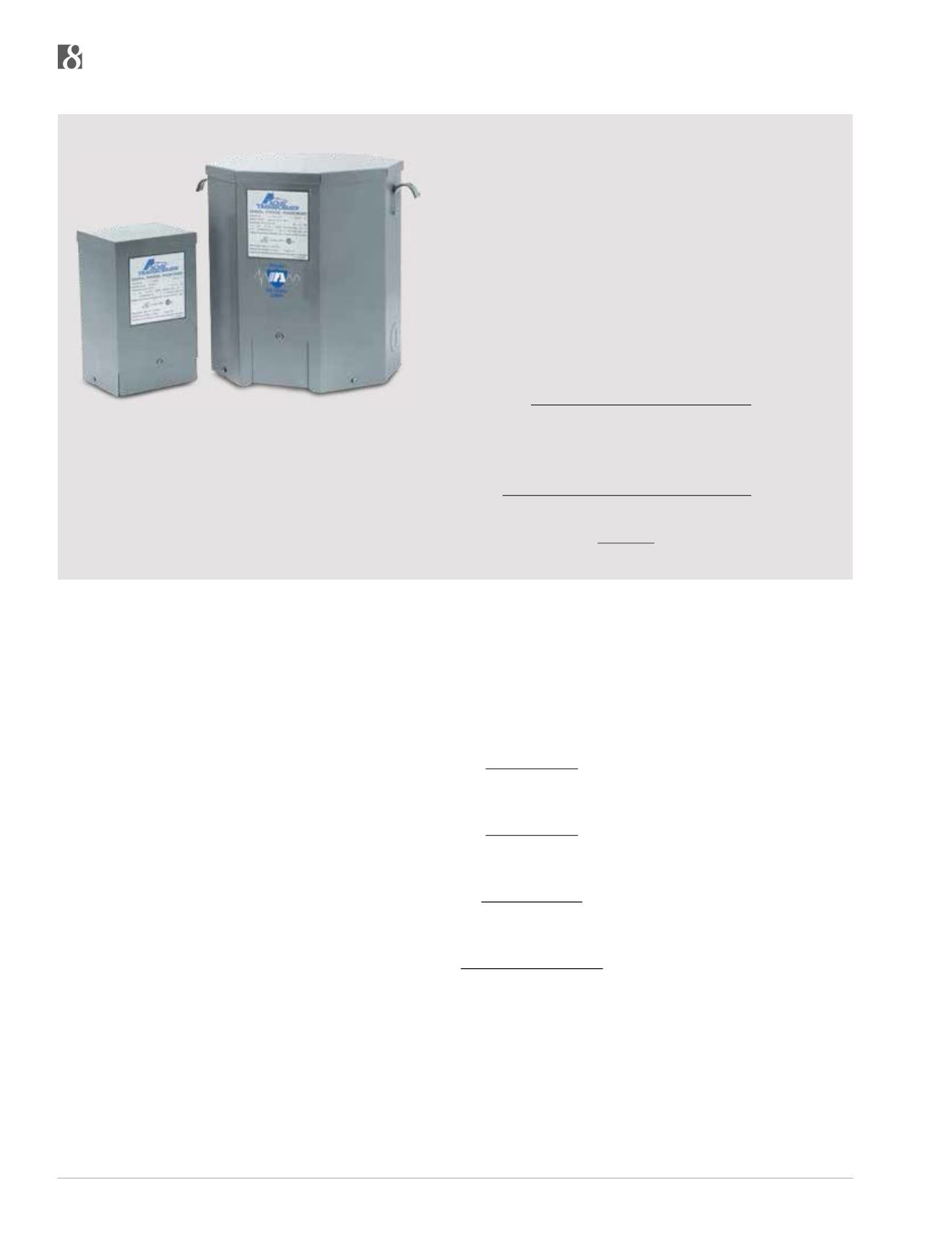

B u c k - B o o s t T r a n s f o r m e r s
122
toll free 800.334.5214 ACME ELECTRIC |
hubbell-acmeelectric.com11. Can buck-boost transformers be used on motor loads?
Yes, either single or three phase. Refer to the motor data charts in Section I for determining kVA and Amps required by NEMA
standard motors.
12. How are single phase and three phase load Amps and load kVA calculated?
Single Phase Amps =
kVA x 1000
Volts
Three Phase Amps =
kVA x 1000
Volts x 1.73
Single Phase kVA =
Volts x Amps
1000
Three Phase kVA =
Volts x Amps x 1.73
1000
THREE-PHASE
13. Can buck-boost transformers be used on three-phase systems as well as single phase systems?
Yes. A single unit is used to buck or boost single phase voltage — two or three units are used to buck or boost three phase
voltage. The number of units to be used in a three -phase installation depends on the number of wires in the supply line. If the
three-phase supply is 4 wire Y, use three buck-boost transformers. If the 3-phase supply is 3 wire Y (neutral not available),
use two buck-boost transformers. Refer to three-phase selection charts.
(1 kVA) T111683
(7.5 kVA) T2535153S
The picture to the left illustrates the difference in physical size between
the autotransformer of 1 kVA, capable of handling a 9.58 kVA load, and
an isolation transformer capable of handling a 7.5 kVA load.
To cite an example... a model T111683 buck-boost transformer has a
nameplate kVA rating of 1 kVA, but when it’s connected as an autotrans-
former boosting 208V to 230V, its kVA capacity increases to 9.58 kVA.
The key to understanding the operation of buck-boost transformers lies
in the fact that the secondary windings are the only parts of the trans-
former that do the work of transforming voltage and current. In the exam-
ple above, only 22 volts are being transformed (boosted) — i.e. 208V
+ 22V = 230V. This 22V transformation is carried out by the secondary
windings which are designed to operate at a maximum current of 41.67
amps (determined by wire size of windings).
Maximum Secondary Amps =
Volts x Amps x 1.73
Secondary Volts
Maximum Secondary Amps =
1.0 kVA x 1000
=
24V
1000 VA = 41.67 Amps
24V


















